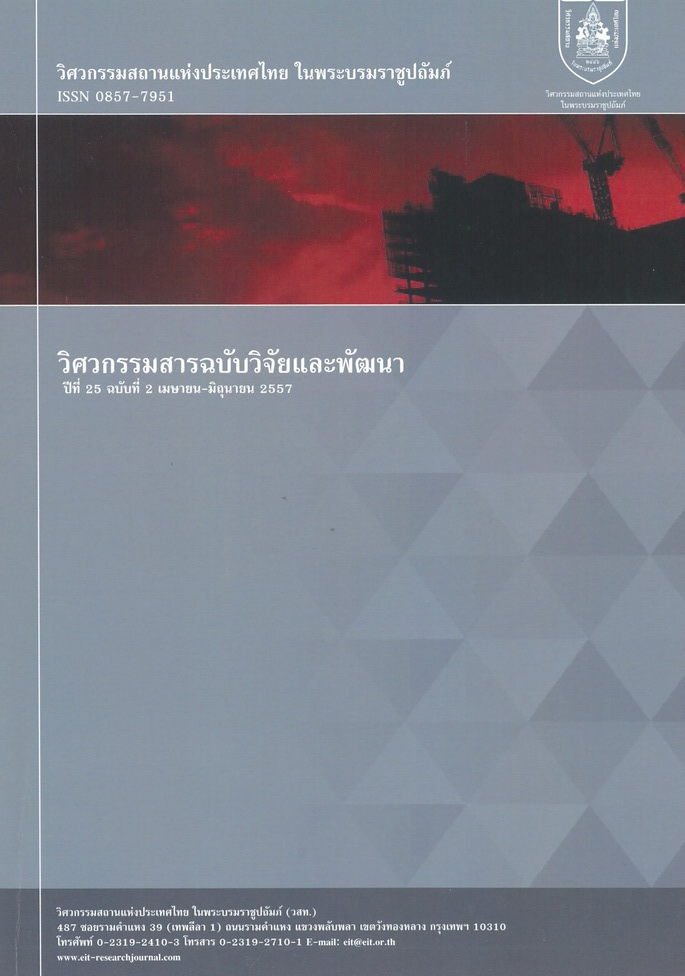Risk Assessment For Hazardous Substances Transport on Road
Main Article Content
Abstract
งานวิจัยนี้มีวัตถุประสงค์เพื่อประเมินความเสี่ยงเมื่อเกิดการรั่วไหลของวัตถุอันตรายจากถังในการขนส่งทางถนน ขั้นตอนวิจัยมีดังนี้ (1) คัดเลือกวัตถุอันตรายประเภทที่เป็นไอปกคลุมมีผลต่อสุขภาพที่มีสถิติการเกิดอุบัติเหตุสูงได้แก่ วัตถุกัดกร่อนและของเหลวไวไฟที่ไม่ใช่เชื้อเพลิงจำนวน 3 และ 4 รายการ ตามลำดับ (2) คัดเลือกเส้นทางหลวงแผ่นดินที่มีสถิติการเกิดอุบัติเหตุสูง 12 เส้นทาง (3) ประเมินความเสี่ยงโดยใช้แบบจำลองทำนายรัศมีการแพร่กระจาย ผลวิจัยพบว่า (1) เมื่อเกิดการรั่วไหลของแอมโมเนียเหลว กรดไนตริก กรดไฮโดรคลอริก และไซลีนเป็นความเสี่ยงที่ยอมรับไม่ได้บนทุกเส้นทาง (2) บิวทิลอะซิเตทและเอทิลอะซิเตทเป็นความเสี่ยงที่ยอมรับไม่ได้เฉพาะบนเส้นทางที่มีสถิติการเกิดอุบัติเหตุมากกว่าหรือเท่ากับ 100 ครั้งต่อปี (3) เอทานอลเป็นความเสี่ยงที่ยอมรับได้บนทุกเส้นทาง
The objective of this research was to evaluate the risk of leaked hazardous substances in the transport on road. The research procedure had three steps, (1) hazardous substances that had high accidents on roads were selected for this research. These substances were toxicity. They could change to vapor cloud type when they leaked and could impact to health. Three corrosive substances and four flammable liquid substances (not include fuel) were selected. (2) twelve highways that had high accidents were selected. (3) the dispersion models of vapor cloud were predicted. The risk assessment was done. The results of this research showed that (1) for every highway, the risks of leaked liquefied ammonia, nitric acid, hydrochloric acid, and xylene were unacceptable level. (2) for only highways with 100 times of accidents per year and more over, the risks of leaked butyl acetate and ethyl acetate were unacceptable level. (3) the risk of leaked ethanol was acceptable level for every highway.
Article Details
The published articles are copyright of the Engineering Journal of Research and Development, The Engineering Institute of Thailand Under H.M. The King's Patronage (EIT).


